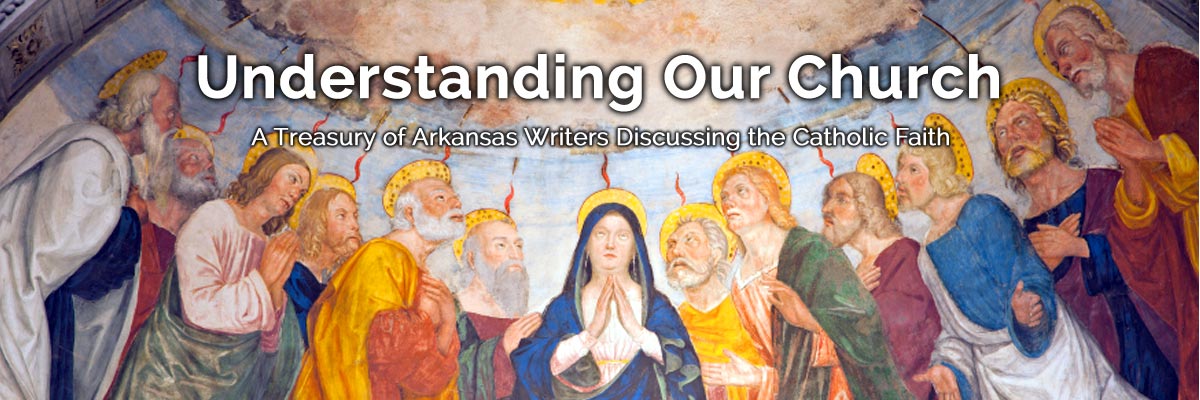Official Website of the
Catholic Diocese of Little Rock
Relics tour provided educational, moving experience for Catholics
Published: February 15, 2018
By Deacon Mike Cumnock
St. Mary Church, Batesville / St. Cecilia Church, Newport
A few months ago, several Arkansas parishes hosted an exposition of various saints’ relics through the Treasures of the Church tour, a ministry run by Father Carlos Martins.
Throughout the United States, Father Martins gave presentations on the Church’s teachings and on the particular collection traveling with him. I admit that my knowledge of relics was limited, and I was intrigued.
I was aware that many churches have relics in their altars. I had attended services where relics were included and I have made pilgrimages to many sites — including the Vatican — where relics are on display. Arkansas’ Subiaco Abbey has a very large display of relics in their reliquary. I was also aware that many of my non-Catholic friends think we have a strange relationship with saints in general and relics in particular.
There are three classes of relics: A first-class relic is a piece of the body of the saint. A second-class relic is an item that was owned or used by the saint. A third-class relic is an object that has touched the tomb or first-class relic of the saint.
However, many of these same people are very interested in the Shroud of Turin and the tilma of St. Juan Diego with its image of Our Lady of Guadalupe. My wife and I went to one of the presentations where hundreds gathered in the church. Father Martins gave a very interesting presentation.
Afterwards, we made our way to the parish hall and found an incredible array of more than 160 saints' relics on display, including apostles, evangelists, martyrs, popes, men and women, young and old from various time periods in our Church’s history.
Beside each relic sat an information card containing the saint’s name, any other name they may have been known by, feasts, a profile of his/her life, date of birth and death (if known), and their patronage(s).
I immediately sought out and found the saints that I am particularly drawn to — Benedict, Pope John XXIII, Thomas Aquinas, Polycarp, etc. However, I found myself drawn to more and more of the displays until I had visited each one. I admit that I was very moved and am glad we made the effort. That experience intrigued me, and I began seeking further information.
The timing was right because next week we celebrate the feast day of St. Polycarp (Feb. 23), whose relics are some of the earliest known to be venerated in the Church. The Liturgy of the Hours' office of readings for that day contains his martyrdom story from 155 A.D., where people carried his bones (a first-class relic) away to keep them in their midst.
There are three classes of relics: A first-class relic is a piece of the body of the saint (bone, blood, hair, etc.). A second-class relic is an item that was owned or used by the saint. A third-class relic is an object that has touched the tomb or first-class relic of the saint.
We read in the Old Testament that a dead man’s body touched the bones of Elisha and was restored to life. In the Gospel we read that a woman was cured by simply touching the garment of Jesus as he walked by. The garment did not affect the cure, it was a material means by which God himself intervened.
In Acts we hear that people were cured by the shadow of the Apostles as they passed by, and that clothing was taken from St. Paul out to those who were unable to travel to him, and they experienced healing.
One of the great gifts of the Church is all the men and women who came before us marked with the sign of faith. Our connection to them is the communion of saints and their relics are venerated as a powerful reminder.




